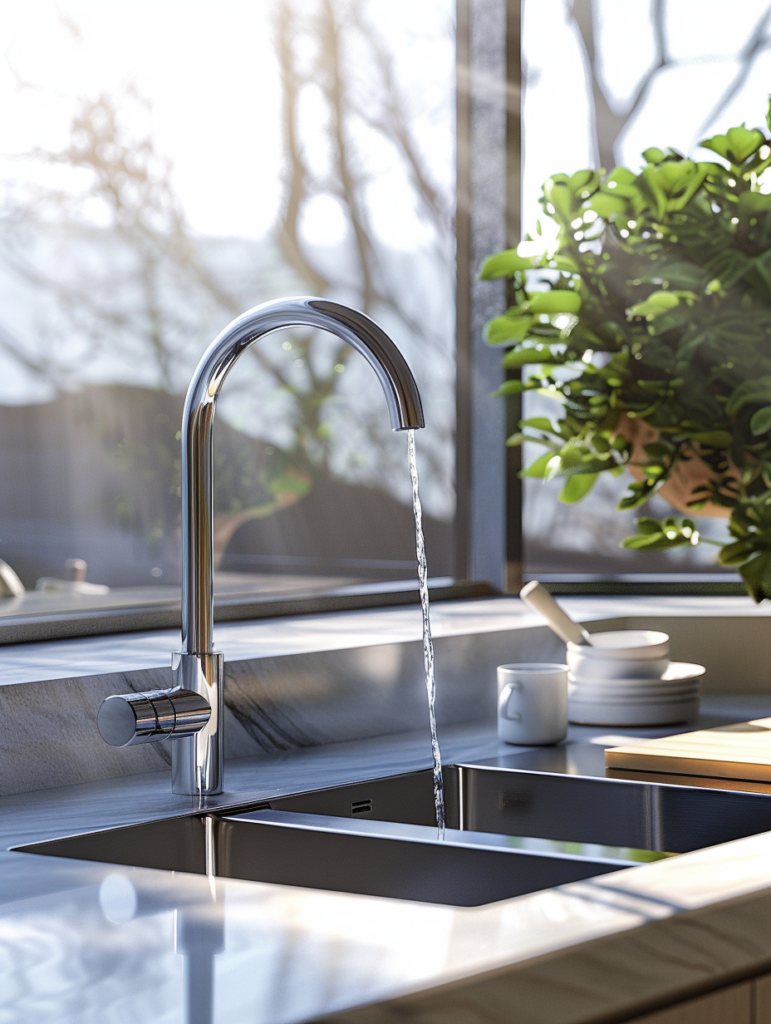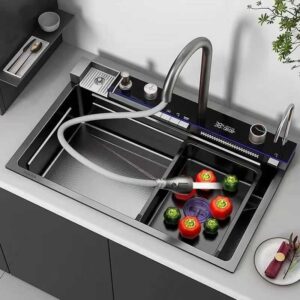A kitchen sink is one of the most frequently used fixtures in any home. Choosing the right sink can transform your cooking experience. But what makes a nano sink stand out from the rest?
Nano sinks use advanced coating technology to create a non-porous, stain-resistant surface that repels water, dirt, and bacteria. This makes cleaning easier while maintaining a sleek, modern look.

If you're considering upgrading your kitchen, understanding the benefits of a nano sink is crucial. Let’s dive into why this modern innovation might be the perfect fit for your home.
Are nano sinks good?
Busy kitchens need durable, easy-to-clean sinks. Nano sinks solve this problem with a high-tech coating that resists fingerprints, scratches, and stains.
Yes, nano sinks are excellent for modern kitchens. The nano coating prevents water spots, reduces cleaning time, and keeps the sink looking new for years. Their scratch-resistant surface also maintains a polished appearance with minimal upkeep.
Why choose a nano sink?
Nano sinks bring multiple advantages due to their specialized coating. Here’s why they outperform traditional sinks:
| Feature | Traditional Sink | Nano Sink |
|---|---|---|
| Stain Resistance | Prone to marks and discoloration | Repels stains and water spots |
| Scratch Resistance | Shows wear over time | High durability with minimal scratches |
| Hygiene | Needs frequent scrubbing | Antibacterial, easy to sanitize |
| Maintenance | Requires polishing/cleaning | Wipes clean with minimal effort |
The non-stick nature of the coating prevents mineral buildup and soap scum. Unlike stainless steel, nano sinks don’t show watermarks, making them ideal for those who prefer a flawless look. The coating also reduces bacterial growth, improving kitchen hygiene.
What are the advantages of composite sinks?
Composite sinks combine materials for strength and style. Many people prefer them for their durability and aesthetic appeal.
Composite sinks mix granite or quartz with resin, creating a durable, scratch-resistant surface. They resist heat, stains, and impact better than standard materials, while offering a luxurious matte or glossy finish.
Composite vs. Nano: Which is better?
Composite and nano sinks each have unique strengths. Let’s compare them:
| Feature | Composite Sink | Nano Sink |
|---|---|---|
| Material | Granite/quartz + resin | Steel/ceramic with nano coating |
| Durability | High impact resistance | Scratch and fingerprint resistant |
| Aesthetic | Matte/glossy stone-like finish | Ultra-smooth reflective surface |
| Heat Resistance | Handles hot pans well | Coating may degrade under high heat |
While composite sinks resist chipping and heat, nano-coated sinks excel in stain resistance and easy cleaning. If you often cook with heavy pots, composite might be better. For those who hate scrubbing stains, nano is ideal.
What are the advantages of stainless steel sinks?
Stainless steel is the most common sink material. Its affordability and durability make it a popular choice.
Stainless steel sinks are budget-friendly, lightweight, and resistant to rust and heat. They’re easy to install, hygienic, and fit well in modern kitchens, though they require regular polishing to prevent scratches.
When to choose stainless steel?
Here’s why people still prefer stainless steel:
- Cost-effective (cheaper than composite or nano)
- Heat-resistant (won’t warp under high temperatures)
- Easy to install (lightweight and versatile)
However, stainless steel requires maintenance. Without a nano coating, it gets water spots, scratches, and dents more easily. If you want a low-maintenance alternative, a nano-coated stainless steel sink is a great upgrade.
What is nano coating in a sink?
Nano coating is a game-changer in sink technology. It adds an invisible protective layer that enhances performance.
Nano coating is a thin, ultra-durable layer applied to sinks. It creates a hydrophobic surface that repels water, oil, and grime, making cleaning effortless and reducing mineral deposits.

How does nano coating work?
The science behind nano coating is fascinating:
- Hydrophobic Effect1 – Water beads up and rolls off instead of sticking.
- Non-Porous Surface2 – Stains can’t penetrate the coating.
- Scratch Protection3 – Reinforces the sink’s surface against wear.
Unlike traditional coatings, nano technology bonds permanently with the sink material. This ensures long-term protection without peeling or fading. It’s especially useful for busy households that need a low-maintenance solution.
Unlike traditional coatings, nano technology bonds permanently with the sink material. This ensures long-term protection without peeling or fading. It’s especially useful for busy households that need a low-maintenance solution.
Conclusion
Nano sinks offer superior stain resistance, easy cleaning, and lasting beauty. Whether you prefer durability (composite), affordability (stainless steel), or advanced tech (nano), each sink type has unique strengths. Choose based on your kitchen’s needs!
-
Understanding the hydrophobic effect can enhance your knowledge of water-repellent technologies and their applications. ↩
-
Exploring the advantages of non-porous surfaces can help you choose better materials for your home or projects. ↩
-
Learning about scratch protection can guide you in selecting durable products that maintain their appearance over time. ↩